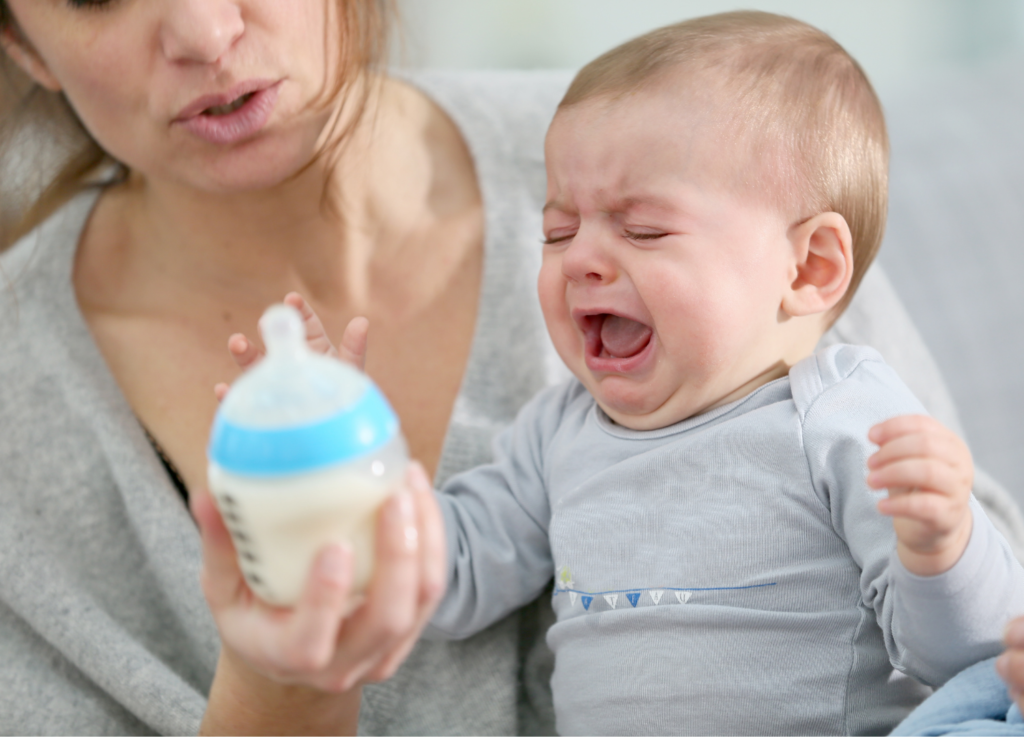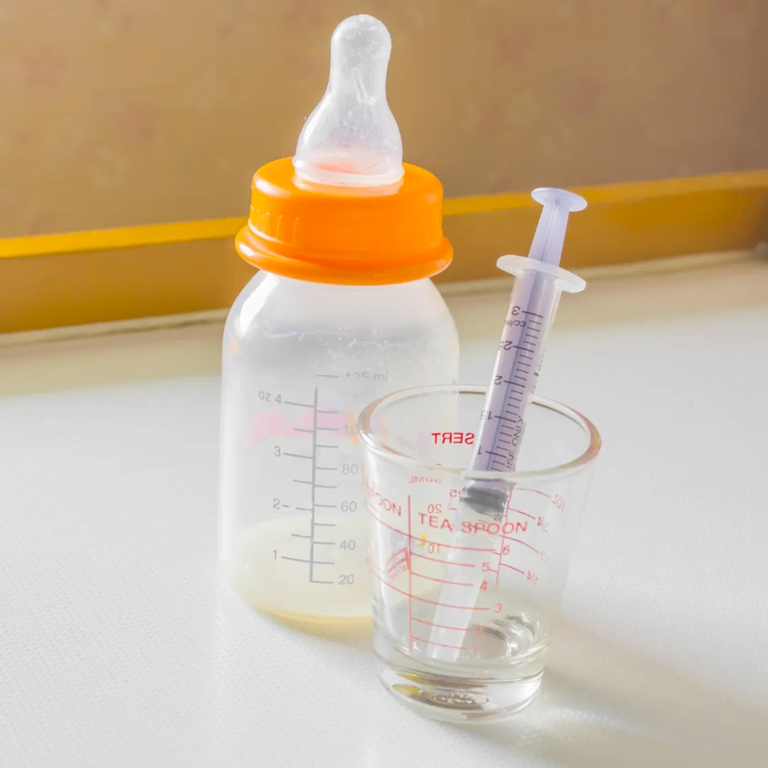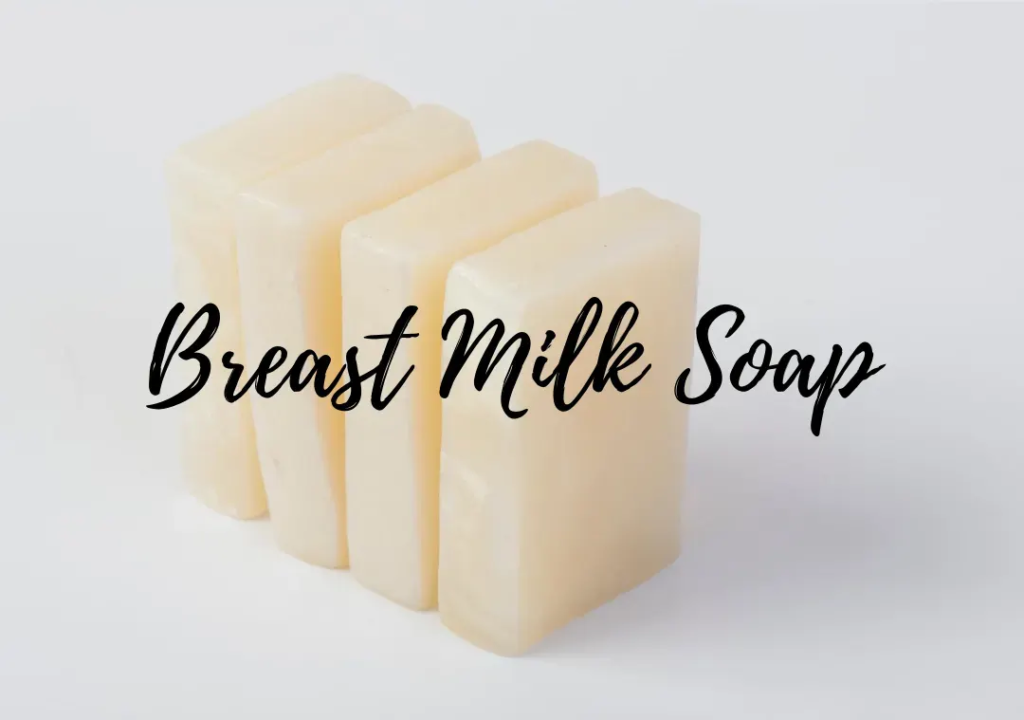High Lipase Breast Milk- When Baby Refuses The Bottle
December 17, 2021 2024-06-20 16:43High Lipase Breast Milk- When Baby Refuses The Bottle
High Lipase Breast Milk- When Baby Refuses The Bottle

Does your breastfed baby refuse a bottle with your thawed milk?
If your milk smells or tastes soapy or metallic, high lipase may be the reason.
Lipase is an enzyme that is normally present in human milk, and is not harmful in any way. It’s actually important for breaking down fats in the milk so babies can get all the fat-soluble nutrients and fatty acids that protect them from getting sick.
Lipase increases the longer milk is stored before being frozen. Milk that has a high level of lipase can develop a soapy smell and taste, but again, it is not harmful to the baby. If your baby starts rejecting the milk, scalding it before freezing will remove some of the lipase. See below
How to scald your milk:
The process isn’t difficult, but it does add an extra step to your pumping routine. Just heat the milk in a pot until tiny bubbles form around the edges of the pan, but don’t boil it. Remove the pot from the stove and allow it to cool before transferring it into storage bags/bottles. To minimize bacterial growth, you can speed up the cooling process by placing the batch into an ice bath before transferring. Be sure to use a crack-proof container, like a tempered glass mason jar. *Please be advised that it is not recommended to pour any hot liquid into a plastic container, even if it’s BPA-free.*
What to do with your already frozen high lipase milk?
Don’t toss it! It still has all the soothing and healing properties, and a multitude of uses beyond drinking.
1) Dilute it with fresh milk to lessen the undesirable taste.
2) Use it for milk baths. Breast milk baths can help with dry skin, cradle cap, rashes, eczema, and the itch of bug bites.
3) Make breast milk lotion. It’s wonderfully soothing, and can help baby’s eczema, diaper rash, baby acne, sensitive skin, even cuts and scrapes.
4) Fill 1 ml syringes to save for first aid.
5) If you’re feeling extra motivated, make breast milk soap! Recipes below

Milk Baths
Probably the most common way to use up undrinkable breast milk! Milk baths are super soothing and can help clear up cradle cap, eczema, diaper rash, as well as moisturizing dry or irritated skin.
How to make your milk bath:
- fill baby’s bath as usual
- add enough breast milk to make the water cloudy
- let baby soak at least 5 minutes (or longer) and sponge milky water over their whole body
- pat dry and seal in the benefits with a gentle moisturizing lotion or amplify the benefits further with breast milk lotion!
Breast milk lotion recipe
Ingredients:
- 3 oz grapeseed or coconut oil (see note)
- 1 tbsp beeswax
- Few drops of Vitamin E oil
- 3 oz fresh breast milk, at room temperature
- a couple of drops of an essential oil (for scent- optional)
Method:
Heat the oil and beeswax together slowly until the beeswax has just melted (stovetop or ~3 minutes in microwave on LOW setting).
Add the Vitamin E oil.
Slowly pour in the breast milk while whisking the oil mixture rapidly to emulsify. The mixture should thicken a bit.
Leave to cool before transferring to storage container. The lotion will continue to thicken as it cools.
Store in a dark place at room temperature. Beeswax reacts to light, and will discolor over time with exposure.
Do not freeze.
Lotion can be used for up to 3 months.
Note: Using coconut oil may be slightly more beneficial, but it also comes out harder, since coconut oil is solid at room temperature. Grapeseed oil produces a more traditional lotion texture and feel.
Note: Please use only your own breast milk, as other women’s milk may pass on bacteria that your baby may not have been exposed to yet, like strep or staph
**reminder: if your baby has eczema related to dairy allergy, do not use lotion from breast milk that contains dairy!**


Breast milk syringes for first aid
Fill 1 cc syringes with breast milk, and freeze in a date-labeled ziploc bag. Keep in mind the longer the milk has been frozen, the less potent the anti-inflammatory and anti-microbial benefits will be.
Pull a syringe out for spot treating the following:
- ear infections
- pink eye
- insect bites
- minor burns
- superficial cuts/abrasions
- diaper rash
…or any other minor irritation!
Please do not use breast milk on open wounds or sores.
Breast milk soap
You’ll need to use a cold processed method, as heat destroys many of breast milk’s benefits. Also, be aware the soap will take 4-6 weeks to cure. It’s a more involved process than the simple lotion, but has similar benefits.
Check out this recipe HERE. Please read to the bottom before beginning to see the process and all the necessary equipment!


***The information provided on our website is intended solely for general educational and informational purposes only. It is neither intended nor implied to be a substitute for professional medical advice. Always seek the advice of your physician for any questions you may have regarding your or your child’s medical condition. Never disregard professional medical advice or delay in seeking it because of something you have received in this information.***
Search
baby bottle feeding breastfeeding breastfeeding latch breastfeeding pain breast milk storage breast refusal bugs cedar park regional clogged duct contraceptives daycare discharge doula engorgement exercise foremilk galactogogues hindmilk hospital how to latch baby labor low milk supply low supply massage mastitis newborn care nursing strike nutrition pacifiers plugged duct plugged ducts postpartum prenatal pumping relactation siblings sleep sore nipples breastfeeding suck training tax breaks thrush tongue tie video weaning
Search



